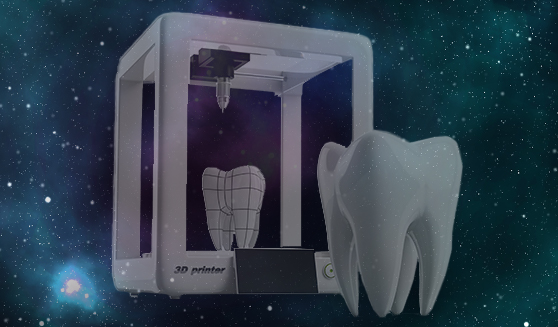
Top trends to watch in the smart cities market
Explore key smart city market trends for 2025–2030, from EV infrastructure to AI-powered waste systems – backed by the latest industry report.


History is scattered with instances of technological breakthroughs that changed the world. The invention of the light bulb, the Wright brother’s first flight and the World Wide Web are just a few momentous examples. With each innovation comes greater accessibility. While the light bulb opened up the night, the flight made the world smaller and connected nations. The World Wide Web empowered people around the globe.
So, what’s the next momentous tech revolution?
3D printing technology is gaining a lot of popularity. It is the process of making physical objects from 3D models, by adding materials, miniscule layer by miniscule layer. Although 3D printing has been around since the 1980’s, new innovations are occurring at warp speed. Advances in machinery, materials (especially biocompatible) and software, have broadened the technology’s reach.
Getting to the root of the problem
Dental 3D printers can pinpoint accurate orthodontic models, dentures, restorations, crowns, retainers, bridges, and more from a single block of material. Each item is produced according to the exact proportions of each unique patient, and multiple appliances can be printed simultaneously. This precision and efficiency mean more incredible speed, amazing accuracy and reduced waste, shrinking manufacturing costs by 80 per cent.
According to the World Health Organisation (WHO) over 60 per cent of school children in the world have cavities that will go untreated. 3D printing means treatments that are faster, bespoke and durable. Reduced cost means greater accessibility for those that need it.
No wonder it is such a huge growth market. According to Marketwatch, the global dental 3D printing industry is forecast to reach the value of $ 11.5bn by 2030, a growth of 29.1 per cent.
Speaking at the Arab Health Conference in 2017, Dr. Hamda Mesmar, Director of Dental Services Department at the DHA, said:
“Using this technology, a dentist will simply scan the teeth using an intra-oral scanner, which will create a digital impression. This image is then sent across to the 3D printing machine through the intranet from different Dental Clinics within DHA, which then replicates the image as a 3D model. The 3D image helps us with accurate planning and precision, especially for complicated dental procedures and surgeries. Patients will greatly benefit from the use of this technology as it helps in better patient outcomes as well as substantially reduces waiting time and cost of care.”
Since then, the technical advancements and fine-tuning has seen further reduction of cost and streamlining of processes. Each passing year sees new and more impressive 3D tech. For example, Dental Cloud software technology has connected the dental industry and restructured communication systems. No longer working in a silo, productivity, efficiency and data security means evolutionary, smart dentistry.
Another example of interconnected technology and smart dentistry is the breakthrough research conducted at King Abdullah University of Science and Technology in Saudi Arabia (KAUST). They have been making huge inroads into the development of smart braces, printed with 3D technology. The braces use human-to-machine interface to accomplish complicated orthopaedic architecture. Discrete 1mm-batteries are placed on each tooth to power LED lights, which provide light therapy according to each tooth’s requirements and enhance bone rejuvenation. The non-toxic lithium batteries are comfortable, flexible and allow faster movement and alignment.
“Such capability enhances the bone regeneration significantly and reduces the overall cost and discomfort. Our future work will include integration of compliant soft-substrate-based LEDs and miniaturized ICs with enhanced wireless capability for smart gadget-based, remote control for cleaning and therapy.” Muhammad Mustafa Hussain, Associate Professor of Electrical Engineering, KAUST.
Elsewhere, a team of researcher at Katholieke Universiteit Leuven University in Belgium are inching closer towards regenerative dentistry. They are working on the potential to regrow teeth from the root, using fungal and animal sources for 3D bio printing.
Joining Forces
Companies around the globe are investing in the growth market of 3D dental printing. Currently heading the industry is the United States and Germany, closely followed by Korea and the UK. However, countries in the MENA region are hot on their heels, with huge recent investments and developments. According to a report by KEARNEY, the UAE has launched the Dubai 3D Printing Strategy to become the globes 3D printing hub by 2030. The aim is to make 3D printing a standard in the health care industry, printing limbs, teeth, hearing aids and more. Elsewhere, in other industry, Saudi Arabia, in partnership with a Chinese 3D printing Company, aims to print concrete structures, in a project worth $1.5 billion.
The bottom line
Streamlined cloud services, same-day production, bespoke fittings, pinpoint accuracy, reduced waste and improved sustainability. 3D printing means that dentists can see more patients at lower costs, the environmental impact is reduced and there is greater accessibility for those who need it. When you put it all together, 3D printing in dentistry has a bright future in an industry pegged as the 4th industrial revolution.

Explore key smart city market trends for 2025–2030, from EV infrastructure to AI-powered waste systems – backed by the latest industry report.

Learn how generative AI is unlocking the true potential of digital twins – to make smart cities more efficient, inclusive, and citizen-focused.

The smart cities of the future will use tech to lower emissions, cut urban temperatures, and improve quality of life in highly populated areas.

Explore key smart city market trends for 2025–2030, from EV infrastructure to AI-powered waste systems – backed by the latest industry report.

Learn how generative AI is unlocking the true potential of digital twins – to make smart cities more efficient, inclusive, and citizen-focused.

The smart cities of the future will use tech to lower emissions, cut urban temperatures, and improve quality of life in highly populated areas.